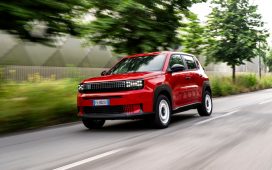While the number of recycled battery packs is low compared with the number of new EVs being sold each year, the factory has been designed to be scalable so it can increase its capacity as demand grows.
At first, though, the plant will focus on recycling the batteries used in prototype EVs and for battery testing. Currently, there’s a limited supply of end-of-life lithium-ion batteries; Mercedes’ first mass-produced electric car, the EQC, was launched in 2018, and the expected lifespan of its battery modules is eight to 10 years. However, Mercedes says the first bank of recycled battery modules will be seen in a production car soon.
While the facility is currently geared up for processing lithium-ion batteries, the technology used at Kuppenheim can be adapted to recycle lithium iron phosphate and nickel manganese cobalt batteries, as well as the solid-state batteries that are expected to appear over the coming years.
Kuppenheim might not be a one-off; Mercedes is planning to build recycling plants in other regions if there’s enough demand. And while the company isn’t currently planning on recycling batteries from other EV brands, it isn’t ruling this out in the future.
How Mercedes recycles EV batteries
The Kuppenheim plant combines mechanical and hydrometallurgic processes on a scale – the brand says – never seen before in a single plant in Europe. Many existing battery recycling facilities employ pyrometallurgical processes that use fire and heat to reclaim precious metals, but hydrometallurgic (liquid chemical) technology promises substantial efficiency advantages. It uses less energy (the process uses 100% green electricity, supplied by solar panels on the roof of the plant), and it produces less material waste, enabling a greater proportion of metals to be recovered.








